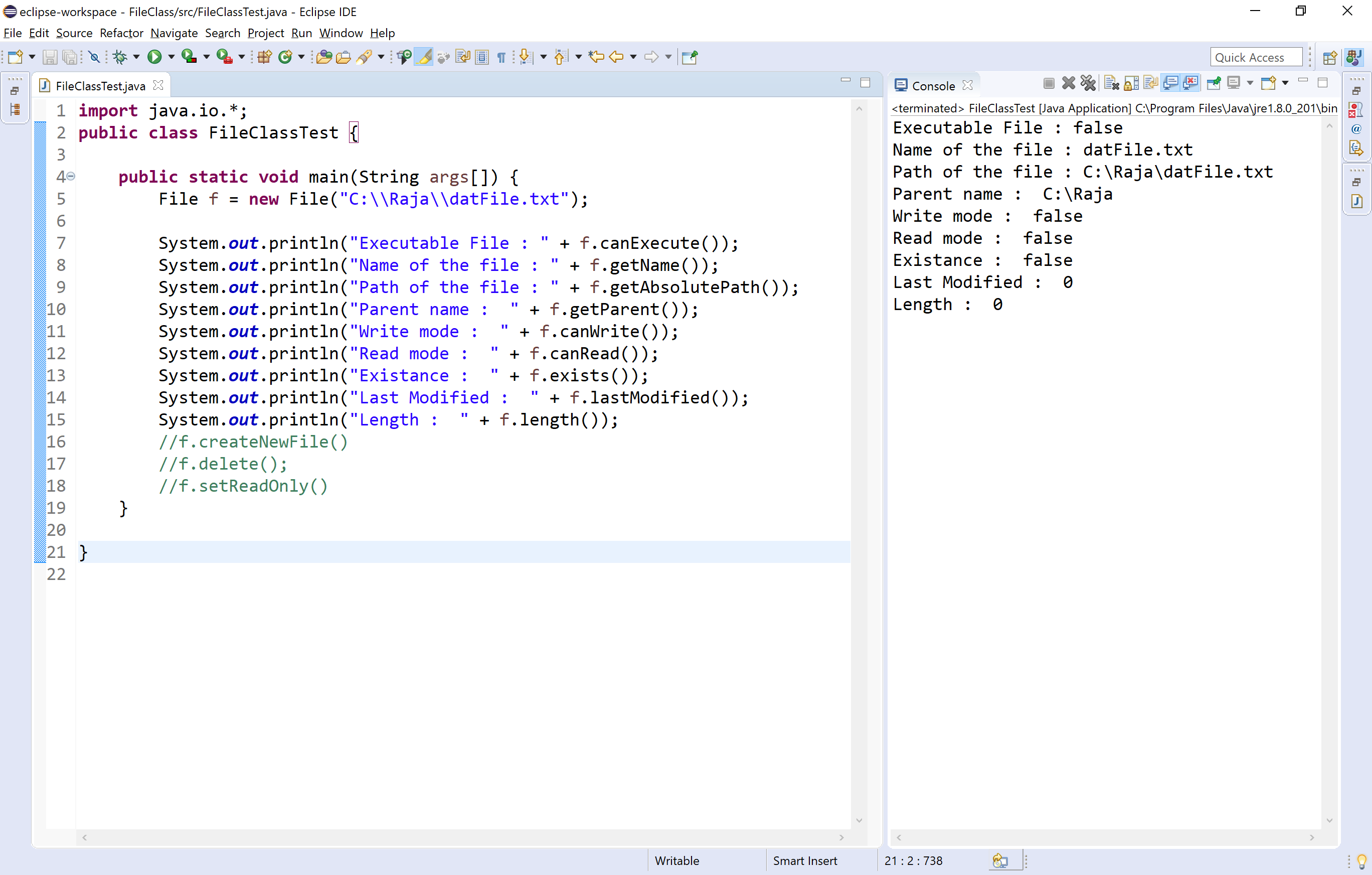
You can invoke the PrintFiles file visitor as follows:įiles.walkFileTree(startingDir, opts, Integer.MAX_VALUE, finder) Ĭonsiderations When Creating a FileVisitorĪ file tree is walked depth first, but you cannot make any assumptions about the iteration order that subdirectories are visited. The first method requires only a starting point and an instance of your FileVisitor. walkFileTree(Path, Set, int, FileVisitor).Once you have implemented your FileVisitor, how do you initiate the file walk? There are two walkFileTree methods in the Files class. is FileVisitResult visitFileFailed(Path file, Print each directory FileVisitResult postVisitDirectory(Path dir, each type of FileVisitResult visitFile(Path file, The FileVisitor methods are shown in bold: Any exception that is encountered is printed to the console. It also prints the size, in bytes, of each file. It prints the entry whether the entry is a regular file, a symbolic link, a directory, or some other "unspecified" type of file. Here is an example that extends SimpleFileVisitor to print all entries in a file tree. You can extend this class and override only the methods that you require. This class, which implements the FileVisitor interface, visits all files in a tree and throws an IOError when an error is encountered.

If you don't need to implement all four of the FileVisitor methods, instead of implementing the FileVisitor interface, you can extend the You can choose whether to throw the exception, print it to the console or a log file, and so on. The specific exception is passed to the method.

If any errors are encountered, the specific exception is passed to the method. postVisitDirectory – Invoked after all the entries in a directory are visited.preVisitDirectory – Invoked before a directory's entries are visited.The interface has four methods that correspond to these situations: A FileVisitor specifies the required behavior at key points in the traversal process: when a file is visited, before a directory is accessed, after a directory is accessed, or when a failure occurs.

To walk a file tree, you first need to implement a FileVisitor. Considerations When Creating a FileVisitor.class file in a tree, or find every file that hasn't been accessed in the last year. Do you need to create an application that will recursively visit all the files in a file tree? Perhaps you need to delete every.


 0 kommentar(er)
0 kommentar(er)
